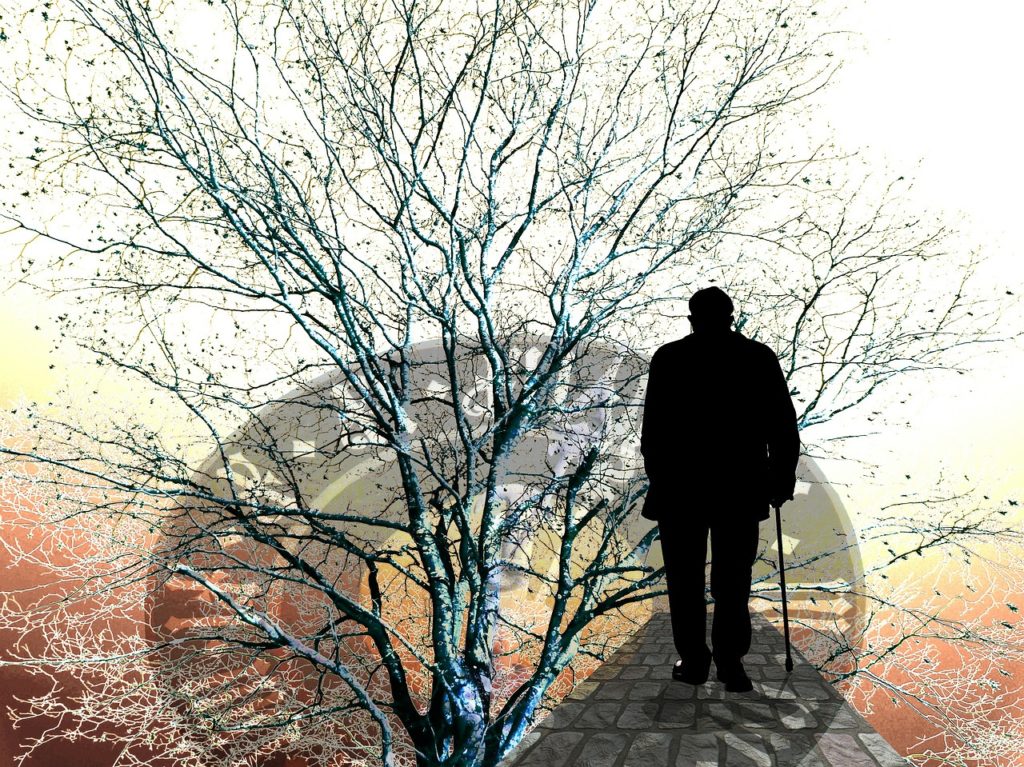The COVID-19 pandemic has brought to light the serious implications of loneliness and isolation for patients with serious or terminal illness, including early mortality, pain sensitivity, psychosocial well being and other factors. While widespread vaccination is giving providers better access to patients, many are realizing that efforts to address these aspects of patient care should continue beyond the outbreak.
Hospice and palliative care providers, who are focused on improving quality of life, work to address patients’ psychosocial and emotional needs as well as their medical needs. The interdisciplinary team structure for both types of care includes social workers and chaplains, and hospices provide bereavement services to families following a loved one’s death.
The pandemic forced many of these services into the virtual space, with providers relying on telehealth systems to engage with patients and families.
“In the hospice world, we have a bit of a breadth of acuity levels. For patients who are more upstream in palliative care, isolation and loneliness can exacerbate any chronic conditions,” Edward Garcia, founder and executive director of the Foundation for Social Connection, told Hospice news. “This can include dementia, heart disease, cancer survival rates and comorbidities.”
Social isolation, loneliness, and other indicators of social connection have associations with negative physical, cognitive, and psychological effects, health-related behaviors, and health-related quality of life, according to research by the National Academies of Science, Engineering and Medicine.
According to a recent report from health insurance marketplace company GoHealth, the pandemic has been driving a mental health decline among isolated aging populations as they practice social distancing from family and friends. In a nationwide study of 1,000 Medicare beneficiaries, 25% percent reported a decline in their mental wellness since the pandemic’s onset, and more than 90% felt lonelier.
One area of particular concern to hospice and palliative care providers is managing patients’ pain. Pain management is a cornerstone of hospice care and can have a substantial impact on patient and family satisfaction.
A 2014 study found patients and families view pain and symptom management as their top priority related to quality of hospice care. With consumers and referral organizations paying increased attention to publicly reported quality data, dissatisfaction with pain treatment can hurt an organization’s bottom line.
“We approach so many illnesses from an individual standpoint, but we know that there’s this social component to it. One of those is pain,” Kelli Harding, M.D., professor of Psychiatry at Columbia University, said in a virtual Connect+Conversations event. “People don’t experience pain as profoundly when they’ve got more positive social connections. When you see your doctor, you are asked a lot of quotations about yourself, but it’s not the norm to ask about patients’ relationships and provide support to bolster that.”
Connect+Conversations is a series of online events designed to discuss the social and health impacts of isolation. Participating organizations include the National Partnership for Hospice Innovation, Foundation for Social Connection, Social Health Labs, Commit to Connect, the Administration of Community Living and the AARP Foundation.
While assessing patients for isolation is not the norm in health care, some hospice providers are taking that extra step. Last year, St. Croix Hospice, a portfolio company of the private equity firm H.I.G. Capital, revised its care planning and patient assessment tools in their electronic health records system to include information about barriers preventing patients from interacting with family members and friends.
St. Croix did this in conjunction with the launch of its InTouch Family Connection Program, designed to help patients stay in contact with significant people in their lives both virtually and in person.
In addition to facilitating electronic communication such as video calls, St. Croix staff have supplied families with personal protective equipment (PPE) and educated them on basic infection prevention and control practices. If the patient dwells in a nursing home, assisted living or other facility, the hospice provider helps ensure they are in compliance with any applicable rules or guidelines.
Multi-state provider Crossroads Hospice & Palliative Care earlier this year launched a new technology platform to help reduce the plague of social isolation afflicting patients. The Crossroads Connections program targets patients residing in the long-term care setting, where pandemic-related restrictions have often prevented patients from seeing loved ones as well as hospice staff.
Crossroads Connections is a video chat application that patients can access through any web browser equipped with a camera or microphone. The system is compliant with the Health Insurance Portability and Accountability Act (HIPAA). Data are encrypted and no information is stored.
“On-line video conferencing can support religious and other group activities,” wrote Dan Hoefer, M.D., a physician with Sharp Healthcare in a report from the National Hospice & Palliative Care Organization (NHPCO). “As well, the integration of physical visits after appropriate time or screening may enable limited in-person visits from family and close friends.”
In addition to technology, hospices have another solution they can offer — their volunteers. Under the Medicare Conditions of Participation, volunteers must account for 5% of a hospice provider’s patient care hours. Hospice providers often consider volunteers to be a member of their interdisciplinary care teams along with nurses, chaplains, social workers, the medical director, and other professionals.
The nation’s 420,000 hospice volunteers provide more than 19 million hours of service annually, generating total cost savings of nearly $469 million, according to NHPCO.
“Volunteers can easily start as they go into people’s homes or have a virtual connection and start to use validated screening tools [for loneliness and isolation,” Garcia said. “Hospices are primed to do that. They’re already going to people’s homes and doing work in the community.”
Companies featured in this article:
AARP Foundation, Columbia University, Commit to Connect, Crossroads Hospice and Palliative Care, Foundation for Social Connection, GoHealth, H.I.G. Capital, National Hospice and Palliative Care Organization, National Partnership for Hospice Innovation, Social Health Labs, St. Croix Hospice



